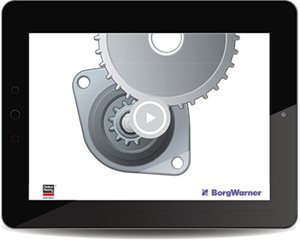Have you ever been replacing a starting motor only to find it has a different pinion than the original motor? You may think it’s the wrong replacement part since the pinion size, tooth count and placement are different—but that may not be the case.
Starters are designed to match the engine ring gear for proper mesh and performance. Most starters—including Delco Remy branded starters—have a centered pinion. However, some manufacturers use an offset pinion.
If the old starter’s pinion is offset and the new one is centered, you will notice the pinion on the new starter is larger in size. The larger pinion is needed in order for the pinion to reach the ring gear when it is centered. Additionally, you’ll likely notice a higher tooth count.

An offset pinion, on the other hand, has a smaller pinion size. So, in order for it to reach the ring gear, the pinion is offset and moved closer to the ring gear. Frequently, an offset pinion will have fewer teeth.
Our latest tech tip video focuses on replacing a starter with an offset pinion. Watch it on the
Delco Remy YouTube channel.
